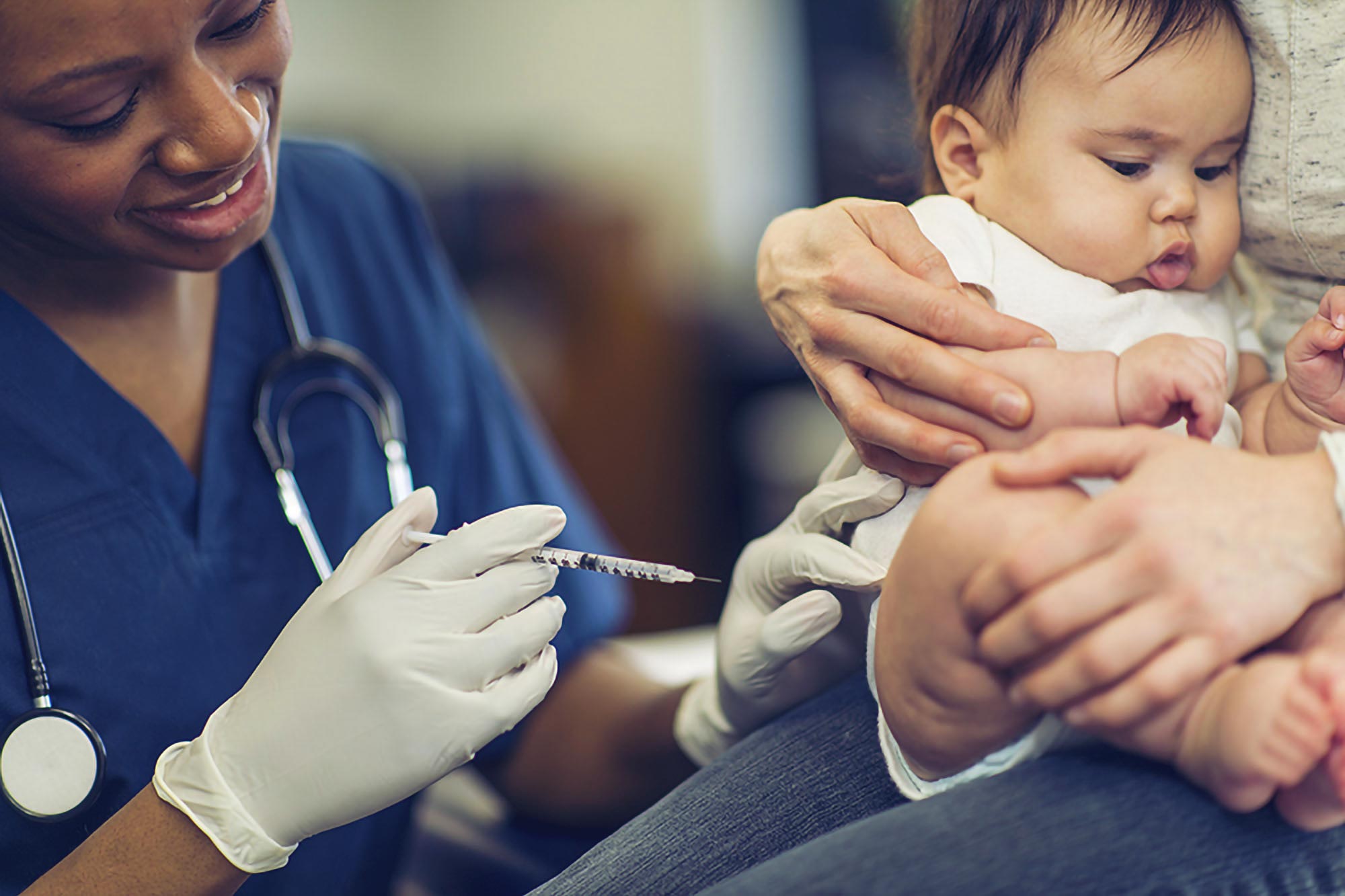UVA Pediatrician Explains How COVID-19 Vaccines for Youngest Kids Are Being Tested
Editor’s Note: Dr. Debbie-Ann Shirley, an associate professor of pediatrics at the University of Virginia, wrote this piece for The Conversation.
For some parents of young children, the wait for COVID-19 vaccines has been long and painful.
Throughout 2021, vaccines against COVID-19 emerged as the most effective way to prevent severe forms of the disease. Vaccines are currently recommended for everyone 5 years and older in the United States, but are not yet available for younger age groups. Although rarer in young children, serious illness can lead to hospitalization and even death from COVID-19.
Recent U.S. rates of COVID-19-associated hospitalizations in children under 5 were the highest ever recorded, reflecting the surge in cases of the highly transmissible variant omicron. The number of hospital admissions escalated in January to 14.8 per 100,000 people, five times more than during the delta variant increase in September. Safe and effective early childhood vaccines offer the prospect of protecting and minimizing disruptions to early childhood education and childcare.
As a pediatrician specializing in infectious diseases, I have cared for many children with COVID-19 in our medical center. I’ve also had the opportunity to regularly talk to parents about how to make the best choices to protect their young children from COVID-19.
Here’s the latest on the clinical trials and formal vaccine review process for this important group of patients.
COVID-19 Vaccine Timeline for the Youngest Children
On March 23, Moderna released interim results from its early childhood trial, which included the enrollment of 6,700 children aged 6 months to under 6 years. Moderna gave the vaccine to children in two doses, with children in this age group receiving a quarter of the adult dose.
The company reported robust antibody responses similar to what they saw in young adults between the ages of 18 and 25. During the microwave, however, the efficacy against infection was 44% in children 6 months to less than 2 years old and 38% in children between 2 and 6 years, the company said. On the same day, Moderna announced that it is continuing to apply for emergency use authorization from the Food and Drug Administration to use the vaccine.
Shortly before that, during the height of the ommicron wave, Pfizer-BioNTech, the collaboration whose COVID-19 vaccine is the only one currently available to U.S. children and adolescents over the age of 5, filed with the FDA for approval. to expand its COVID-19 vaccine for emergencies. 19 vaccine for use in children under 5 years of age. The children in this part of their study received one-tenth the dose given to adults and teens.
Pfizer had previously announced that although two injections of this low dose of its vaccine elicited antibody responses similar to those seen in older groups in children 6 months to 2 years of age, adequate antibody responses did not develop in children 2 to 5 years of age. A series of three doses for all young children is now being tested. The FDA has delayed reviewing Pfizer’s request for emergency use until data on the third dose is available, which is expected in early April.
COVID-19 vaccines for young immune system
COVID-19 vaccines have been shown to be highly effective in the prevention of severe COVID-19 in adults and older children.
Prior to use, all vaccines undergo rigorous testing in clinical trials, first in adults and then in children, recognizing that there may be biological differences in the immune response for different age groups. By sequentially decreasing in age, researchers and regulators can evaluate the optimal dose with the least number of side effects.
Both Moderna and Pfizer tested their vaccines by age group. The ongoing Pfizer study for individuals under the age of 12 began in March 2021, after evaluating, for example, adults and older teens, and then 12 to 15-year-olds. Children ages 5 to 11 were then given a third of the dose given to adults and teens as two doses, which produced similarly high levels of protective antibody responses compared to 16- to 25-year-olds. Based on the robust immune response and safety established in this study, the FDA expanded its emergency authorization for children ages 5 to 11 in October.
However, more recent work, including a study not yet peer-reviewed, suggests declining vaccine efficacy during the wave of omicron variants, with a more pronounced decline over time in children ages 5 to 11. It’s reassuring that protections against hospitalization remained strong, and boosters improved protection among eligible older teens. Pfizer and Moderna plan to evaluate booster dose in children. Optimization of doses and intervals in all age groups may help to maintain higher levels of protection in view of the omicron variant.
How immune responses may differ in children by age
Vaccines work by teaching the immune system to make disease-fighting antibodies. Several factors determine how our bodies respond to vaccines, and one of these variables is age. Vaccine responses in particular can differ in very young children, when the immune system may have less memory.
Testing by age group helps to account for these differences in how the maturing immune system responds to different types of vaccines. It is common for childhood vaccines to be given in series to help train the young immune response to make a better and stronger antibody response with each subsequent dose.
Vaccine Safety
Trials also evaluate vaccine responses by age. Most side effects of the COVID-19 vaccine were mild and short-lived, such as pain at the injection site. Pfizer and Moderna both report that their COVID-19 vaccines are equally well tolerated in the youngest age groups. Moderna reports the frequency of fever, consistent with other pediatric vaccines.
Even after trials are complete and vaccines are approved or approved, safety monitoring continues. This makes it possible to detect even very rare side effects. An example of this is myocarditis, or inflammation of the heart, which can occur in rare cases after vaccination against COVID-19. Reports indicate that these cases generally responded well to supportive care and were resolved quickly.
Few side effects were reported with nearly 8 million vaccine doses given between the ages of 5 and 11 years, indicating even lower rates in this age group than those aged 12 years and older. Outside of childhood, when babies are born with congenital heart problems, myocarditis is generally uncommon in younger age groups, so it may prove rare following vaccination in young children.
Looking forward
If FDA grants emergency use of a COVID-19 injection for children under 5 years of age after the upcoming review, it will pave the way for the vaccine’s nationwide distribution. The next step will be for the Centers for Disease Control and Prevention to approve its use for the 18 million American children in this age group — a decision usually made within days of FDA approval for COVID-19 vaccines.
Young infants under 6 months of age are not currently included in the vaccine clinical trials, but antibodies produced by mothers through vaccination during pregnancy can be passed through the placenta to provide protection against COVID-19 during the first few months of their pregnancy. life.


Comments are closed.